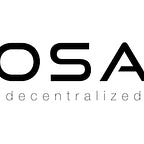Raising Current Health Food Standards with Blockchain is a Proven Solution
Every year, 400,000 people die, and one in 10 people around the world fall ill due to contaminated food. Supply chain problems often lead to further illnesses, lost revenue and wasted products, while the retail industry loses approximately $500 billion annually.
Several well-known retailers claim blockchain technology is ideally suited to addressing these challenges as it establishes a trusted, transparent environment for transactions. People care about what they eat and are no longer willing to be indiscriminate consumers. Manufacturers and known grocery giants can do nothing but adjust, and it seems they’re working to do so.
The OSA DC platform exploits the listed blockchain advantages and supplements them with cutting-edge AI technology, offering a unique product experience. Consumers interact with the platform through their AI-driven personal assistant who guides them along their wandering around the Product Master Data Catalogue, serving as a digital map through the product world. The benefits of AI usage for companies are visually noticeable in the comprehensive processing of consumer data and its further presentation in the form of analytical reports used for the adjustment of business strategies in compliance with up-to-date market conditions. The tracking of product life cycles and transparency in every action taken increases companies’ efficiency and reliability among their traditional competitors.
There is a number of successful efforts companies undertake to win in the race with the most health-oriented grocery leaders.
For example, Nestle is looking for ways of using the benefits of AI and DNA testing to come up with unique personalized diet solutions. The company has initiated the “Nestle Wellness Ambassador” program exploiting the current Instagramming food obsession to promote its healthy nutritional supplement. The program started in Japan with 100,000 users sending pictures of their meals through the Line app, getting further nutrition recommendations and individually formulated supplements, and costing around $600 a year for the vitaminized capsules.
In 2016, Mars Food announced Global Health and Wellbeing Ambition promoting deliberately healthier diet choices to inspire consumers to cook and enjoy family meals together. The program lasts 5 years with its primary focus on the areas of improving products content; providing comprehensive nutrition information; encouraging collective cooking and sharing healthy meals with friends and family; creating new opportunities to offer products in new places and at reasonable prices; and ensuring Mars Food Associates opportunities to promote wellbeing by diet education, available cooking facilities, and healthier food ingredients.
Danone seems to go along with current healthy food trends as well. “One Planet. One Health” appeared on the company signature in 2017. The same year Danone bought WhiteWave, the USA organic food producer, at a price of $12.5 billion. It thus turned into the world’s largest manufacturer of organic food with a solid base in North America, bringing in around $6 billion a year. WhiteWave is expected to help Danone deal with the stiffer market requirements for dairy products and baby food in Europe and China.
Other companies, like PepsiCo and Coca-Cola, work on refining the ingredients in their top drinks, expanding the range of their initially healthy beverages and introducing new products for the category, like Tropicana Essentials Probiotics by PepsiCo.
However, as good as tuning business strategies to healthy food creation is, it alone cannot grant appropriate levels of safety and quality to the involved products. Only by overcoming the problems of production wastes, overstocking, and lack of transparency within the production cycle and imposing higher responsibility levels on every party involved can significant steps towards a healthier grocery world be made. Not surprisingly, modern technology comes to the rescue of the overwhelmed grocery producers looking for a single working solution. On the wave of total ‘blockchainization’ in many industries like healthcare, finance, gambling, and real-estate the question arises: Can one technology be equally potent in solving problems in seemingly unrelated areas using the same working principles? Judging by the positive examples of current blockchain projects the answer is clear — yes, it can.
The technology is structured through interlinked blocks of records, stored across numerous computers rather than on a single server, simultaneously serving two purposes: the insurance of data security from fraud or hacker attacks and a backup in case of the technical failure of a single machine. Furthermore, the system’s immutable nature eliminates the possibility of corruption and grants transparency in every stage of the product lifecycle. In this closed-loop, there is no chance for the wrong or low-quality ingredients to be added to the product without the agreement of all parties involved.
